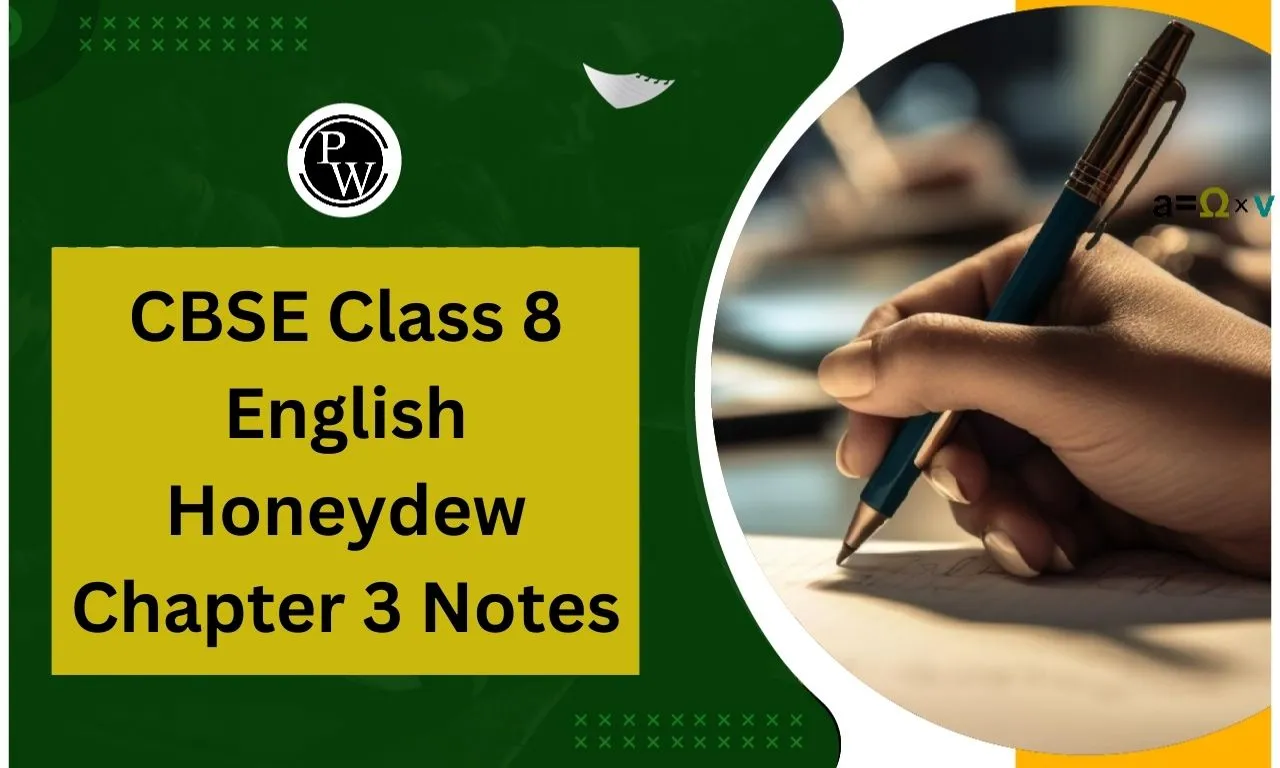
CBSE Class 8 English Honeydew Chapter 3 Notes: Chapter 3 of the CBSE Class 8 English textbook Honeydew, titled “Glimpses of the Past”, is an engaging narrative that combines history and storytelling to highlight India’s struggle against British rule. This chapter is important from the exam pattern perspective, often featuring in comprehension, short answer, and value-based questions.
Students should focus on key events, characters, and the message conveyed through visuals and narration. As per the CBSE Class 8 syllabus, this chapter builds critical thinking and awareness of India’s colonial history. Thorough revision of notes, vocabulary, and key themes will help students perform well in both objective and subjective sections of the exam.
Chapter 3 of CBSE Class 8 English Honeydew, titled “Glimpses of the Past”, is a powerful chapter that presents India’s pre-independence struggle through a series of illustrated events. It plays a crucial role in helping students understand the social, political, and economic conditions under British rule.
The chapter is important as it develops historical awareness and a sense of patriotism among learners. It also enhances comprehension skills and visual literacy through its unique presentation style. Understanding this chapter is essential for answering questions based on character analysis, theme interpretation, and historical relevance in the exam, making it a key part of the syllabus.
Chapter 3 of Honeydew, titled “Glimpses of the Past”, opens in 1757, when the British had already established a strong presence in India, backed by superior weapons and financial strength. In contrast, the Indian princes were divided, short-sighted, and often in conflict with one another—some even seeking British support to settle internal disputes. The East India Company took advantage of this disunity and followed the policy of ‘Divide and Rule’, belittling Indian rulers and consolidating power. While a few Indians supported the British, many opposed them. Among the early resistors was Tipu Sultan of Mysore, a visionary leader who bravely fought against the British and died in 1799 during the Fourth Anglo-Mysore War.
As the narrative unfolds, it sheds light on the prevailing social evils like untouchability, Sati, child marriage, and caste divisions, which were encouraged by orthodox religious leaders. Indians had lost their self-respect, and the British further oppressed them by imposing heavy taxes, forcing farmers off their land, and destroying local craftsmanship—for example, by cutting off artisans' thumbs. The British imported tax-free goods from England, devastating Indian industries in their pursuit of wealth and dominance.
Between 1772 and 1833, Raja Ram Mohan Roy emerged as a reformer from Bengal. He founded the Brahmo Samaj and advocated for social reform, religious tolerance, and modern education. He strongly opposed social evils like Sati and child marriage and published newspapers until the British banned them in 1823. He played a key role in banning Sati, striving to restore dignity and justice in Indian society.
The British oppression continued through laws like the Regulation III Act of 1818, which allowed the imprisonment of Indians without trial. In 1829, British exports to India surged, crippling local industries. Lord Macaulay’s 1835 education policy introduced English education, producing clerks for British administration but also unintentionally nurturing a new generation of educated Indians who began questioning colonial rule and social injustice.
By 1856, the British had extended control over almost the entire subcontinent. Their growing oppression triggered widespread unrest. In 1855, the Santhals revolted and killed British officers and supporters. The major uprising of 1857 began with Mangal Pandey, who attacked a British officer and was executed. The rebellion spread as sepoys marched to Delhi, calling for Bahadur Shah Zafar’s leadership. Messages calling for unity were shared through chapatis and lotus flowers among villagers and soldiers.
The freedom movement gained momentum as more leaders joined the fight—Begum Hazrat Mahal of Lucknow, Maulvi Ahmadullah of Faizabad, Azimullah Khan, Tatya Tope, Nana Saheb of the Maratha Empire, and Kunwar Singh of Bihar. This marked the beginning of India’s long and determined struggle for independence.
Chapter 3, Glimpses of the Past, offers a vivid portrayal of India’s journey from 1757 to 1857, highlighting the injustices under British rule and the awakening of Indian nationalism. Through a mix of historical facts and engaging illustrations, it educates students about the early seeds of resistance that eventually led to India’s freedom struggle.
This chapter inspires young readers to appreciate the sacrifices made by countless Indians and understand the importance of courage, unity, and patriotism.
Chapter 3 of CBSE Class 8 English Honeydew, titled “Glimpses of the Past”, is an important lesson that highlights India’s struggle against British rule through engaging visuals and narration. It covers key historical events, social reformers, and the beginning of the freedom movement.
This chapter not only helps build historical awareness but is also significant for exams. To help you understand and revise the chapter effectively, we have provided comprehensive notes in the PDF format below.
Study without using the internet
